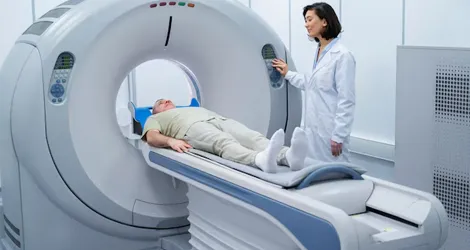Overview
Prostate cancer is the most common cancer in men. The prostate is a gland, walnut-sized, sitting below the bladder and in front of the rectum. It produces the fluid that nourishes and protects sperm. It thus supports the male reproductive system. The cancer emerging from the prostate among men is one of the most common forms, but most cases are detected before extending out of the gland. Early detection improves treatment chances substantially; in many cases, cancer can be eliminated at this stage. Since progression of prostate cancer is typically very slow, many men prefer active surveillance for investigative and close observation of disease states.
More aggressive treatment is warranted when the cancer grows rapidly or shows other signs of malignant spread. The options include external radiotherapy and anterior prostatectomy. Treatment usually comprises various parameters, including the staging of the cancer, the patient's age, general health, and preferences. The constant ongoing research and improvements in medical care for prostate cancer have indeed given light to what many men with prostate cancer can expect from the future, heading toward more effective managing and curing of the disease.
When you get prostate cancer diagnosed, you are most likely having an adenocarcinoma. Adenocarcinoma starts in the gland cells - such are those within your prostate - which secrete fluids. Prostate cancer, however, may rarely develop by other types of cells.
Less common types of prostate cancer comprise:
- Small cell carcinomas
- Transitional cell carcinomas
- Neuroendocrine tumors
- Sarcomas
Among the cancers being diagnosed for the males, prostate cancer is the most common after Skin Cancer. According to the CDC, 13 out of 100 men in America develop prostate cancer at one time in their life. While most men with this disease will live their lives and die from causes unrelated to cancer, some will not even require treatment.
However, prostate cancer causes serious morality issues, claiming around 34,000 lives through the United States every year.
Another significant risk factor for prostate cancer is:
- Advancing age: The chances of having something tend to increase with increasing age. In fact, most of them occurred in men 65 years old and above: 60% of prostate cancer cases occur in men older than 50 years.
- Ethnicity: Risk of disease is increased if that person is African American. Moreover, African-American men are also at the highest risk of aggressive forms of prostate cancer and may be diagnosed in younger ages.
- Family history of prostate cancer: The man has two to three times increased chances of having the disease if his close relative is a person with prostate cancer.
- Genetic predisposition: Increased risk if you have Lynch syndrome, or other inherited mutations in Breast Cancer susceptibility genes such as BRCA1 or BRCA2.
There are other possible factors that could predispose one, but the evidence against them is not as strong. Such possible risk factors could include:
- Smoking
- Prostatitis
- BMI over 30 (obesity)
- Sexually transmitted infections
- Agent Orange (used in the Vietnam War).



















